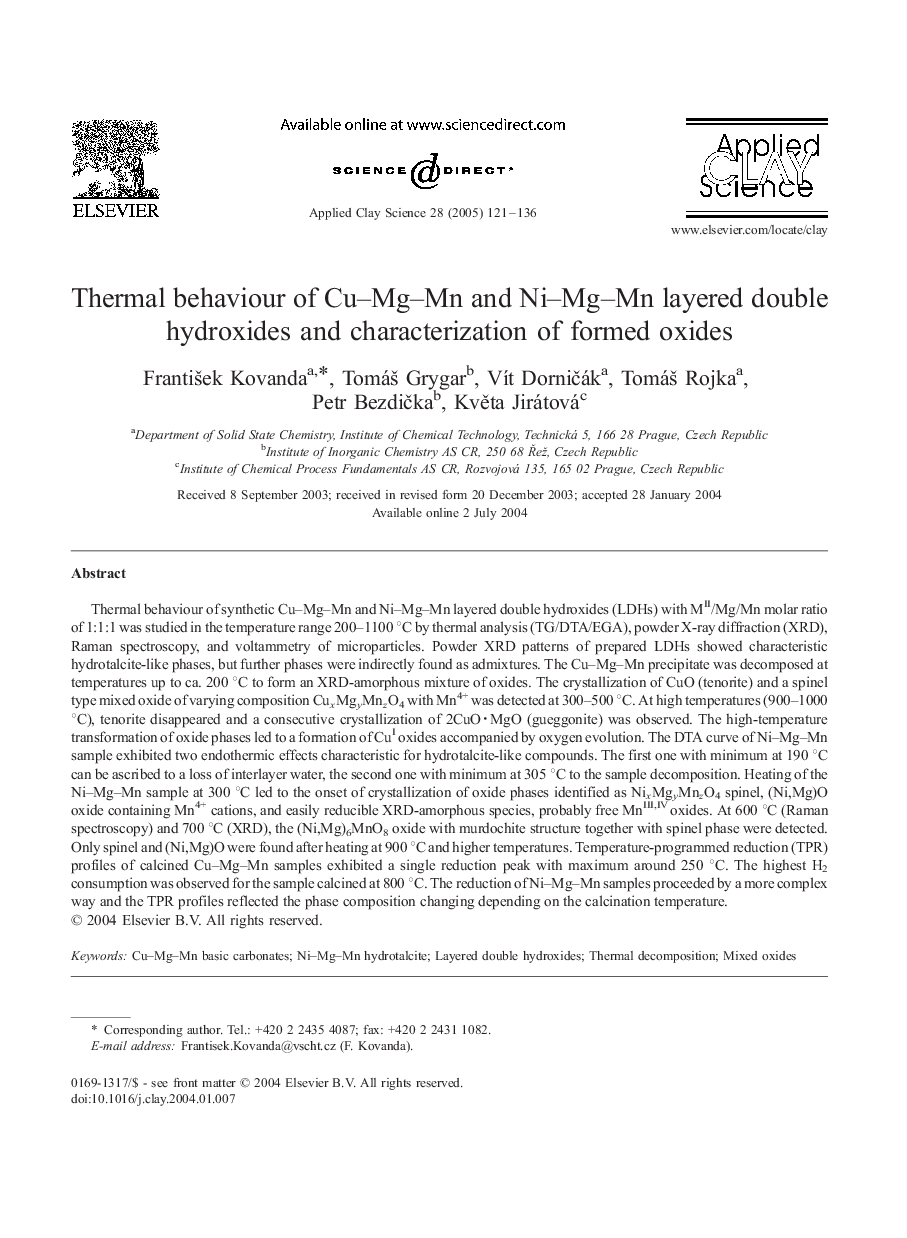| Article ID | Journal | Published Year | Pages | File Type |
|---|---|---|---|---|
| 9822542 | Applied Clay Science | 2005 | 16 Pages |
Abstract
Thermal behaviour of synthetic Cu-Mg-Mn and Ni-Mg-Mn layered double hydroxides (LDHs) with MII/Mg/Mn molar ratio of 1:1:1 was studied in the temperature range 200-1100 °C by thermal analysis (TG/DTA/EGA), powder X-ray diffraction (XRD), Raman spectroscopy, and voltammetry of microparticles. Powder XRD patterns of prepared LDHs showed characteristic hydrotalcite-like phases, but further phases were indirectly found as admixtures. The Cu-Mg-Mn precipitate was decomposed at temperatures up to ca. 200 °C to form an XRD-amorphous mixture of oxides. The crystallization of CuO (tenorite) and a spinel type mixed oxide of varying composition CuxMgyMnzO4 with Mn4+ was detected at 300-500 °C. At high temperatures (900-1000 °C), tenorite disappeared and a consecutive crystallization of 2CuO·MgO (gueggonite) was observed. The high-temperature transformation of oxide phases led to a formation of CuI oxides accompanied by oxygen evolution. The DTA curve of Ni-Mg-Mn sample exhibited two endothermic effects characteristic for hydrotalcite-like compounds. The first one with minimum at 190 °C can be ascribed to a loss of interlayer water, the second one with minimum at 305 °C to the sample decomposition. Heating of the Ni-Mg-Mn sample at 300 °C led to the onset of crystallization of oxide phases identified as NixMgyMnzO4 spinel, (Ni,Mg)O oxide containing Mn4+ cations, and easily reducible XRD-amorphous species, probably free MnIII,IV oxides. At 600 °C (Raman spectroscopy) and 700 °C (XRD), the (Ni,Mg)6MnO8 oxide with murdochite structure together with spinel phase were detected. Only spinel and (Ni,Mg)O were found after heating at 900 °C and higher temperatures. Temperature-programmed reduction (TPR) profiles of calcined Cu-Mg-Mn samples exhibited a single reduction peak with maximum around 250 °C. The highest H2 consumption was observed for the sample calcined at 800 °C. The reduction of Ni-Mg-Mn samples proceeded by a more complex way and the TPR profiles reflected the phase composition changing depending on the calcination temperature.
Related Topics
Physical Sciences and Engineering
Earth and Planetary Sciences
Geochemistry and Petrology
Authors
FrantiÅ¡ek Kovanda, TomáÅ¡ Grygar, VÃt DorniÄák, TomáÅ¡ Rojka, Petr BezdiÄka, KvÄta Jirátová,
